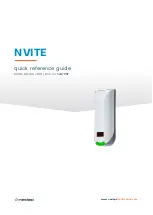
KIT INCLUDES
• Ball Lock Keg
• 5lb Empty CO
2
Tank
• Dual Gauge Regulator
• Beer Line assembly
• Gas Line assembly
INSTRUCTIONS FOR USE:
First, secure a tall glass of beer as this can be a thirsty job. This will be the last time you have to pour from a can or a
bottle. Beer on tap is moments away.
1. Connect your dual gauge regulator to the 5 lb CO
2
tank with a crescent wrench. Do not overtighten the regulator
as you may split the built-in gasket if too much force is applied. The gauge that goes to 3000 psi is your tank gauge
and tells you how much gas is left in your tank. A normal 5 lb CO
2
tank will hold from 600–1000 lbs psi of pressure
when filled, depending on the temperature the tank is stored in. The gauge that goes to 100 psi (max working 60 psi)
is your outgoing gauge and tells you what amount of pressure is being released into the keg.
2. You are now ready to adjust the pressure on the tank. Open the valve on top of the CO
2
tank by turning the valve
counter clockwise. Now take the regulator adjustment knob and slowly thread it into the middle of the regulator body.
Turn the adjustment knob clockwise until the needle on the low pressure gauge (0–100 psi) begins to rise. This adjust-
ment is good for now, we will fine tune the pressure later.
3. On the top of your keg, near the valves (also called posts or body connects), the words “In” and “Out” are stamped.
Attach the gray quick connect to the “In” valve for the CO
2
. Attach the black quick connect to the “Out” valve for
the beverage.
4. After everything is connected, you will need to fine tune your CO
2
pressure. Usually 8–12 psi is considered the
norm, but different beers might have different requirements and ultimately your preference will rule. You increase the
outgoing pressure by screwing in the adjustment knob. In reverse, by loosening the knob, you decrease the pressure.
HOMEBREWING
DRAFT SYSTEMS
INSTRUCTION MANUAL
CO
2
TANK
KEG
BEER
LINE
GAS
LINE
REGULATOR





















